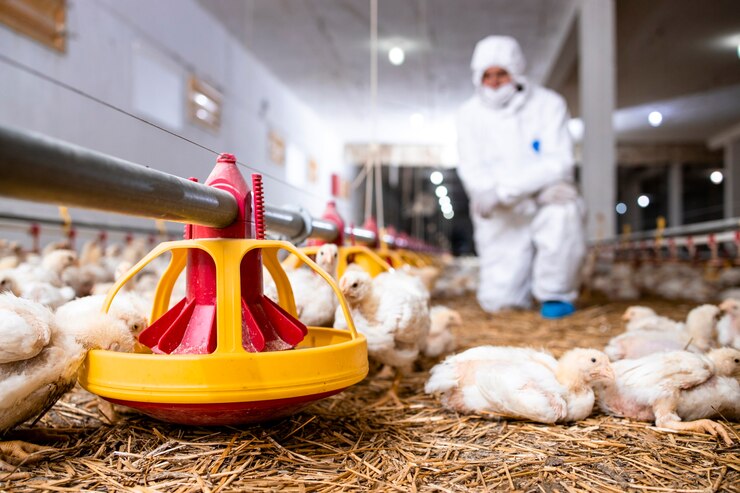Pest problems are a growing issue worldwide. In 2023, the global pest control market reached an estimated $24.9 billion and is expected to rise steadily in the next few years.
If you have poultry, you know this is true: poultry attracts hordes of pesky pests. One of the most significant challenges in poultry management is the constant threat of pests. They disrupt the peace of your flock and jeopardize their health.
Here Are Nine Prime Ways To Keep Your Poultry Healthy And Pest-Free

What do possums eat? Because they are omnivores, possums may forage in a variety of settings and consume a wide range of things, including fruits, vegetables, insects, small animals, and even the eggs of birds. Read on to discover the best ways to deter pests from your fence and ensure your poultry stays in peak health.
1. Monitor Pest Populations
Stop any issues in their tracks before they escalate. The first step in achieving this is by closely monitoring pest populations. To do so, it’s vital to have a good understanding of common poultry pests and their behavior, especially those that are prevalent in your area. Pay attention to temperature and humidity, as these can influence the presence of certain pests.
Keep a detailed record of these factors. For example, if you’re dealing with a flea infestation, researching fleas and their active seasons allows you to implement timely and effective pest control measures.
2. Set Risk Thresholds
Establishing a threshold means determining the point at which pest numbers become problematic and action is necessary. By setting clear thresholds, you prevent the unnecessary use of chemicals, ensuring a healthier environment for your flock.
Set boundaries to help you avoid jumping to drastic measures prematurely and minimize the potential harm to your poultry. Instead of indiscriminately resorting to treatments, focus on interventions when they are truly needed. This thoughtful approach keeps your poultry pest-free and promotes their well-being while being environmentally responsible.
3. Introduce Natural Predators
Harness the power of nature’s own pest controllers. Natural predators are a remarkably effective and eco-friendly solution for keeping pest populations in check. Consider introducing beneficial insects to your poultry area. Ladybugs, for instance, are voracious aphid-eaters, while parasitic wasps can target harmful caterpillar pests.
Additionally, ground beetles are known for their appetite for slugs and snails, which are common nuisances in poultry settings. These natural allies let you create a balanced ecosystem that minimizes the need for chemical interventions. This approach can promote the well-being of your poultry, and foster sustainability at the same time. Teaming up with tiny but mighty accomplices could be a win-win for both your chickens and the environment.
4. Prioritize Moisture Control
A dry environment plays a crucial role in keeping pests from multiplying in your poultry. Dampness is a magnet for troublesome pests like flies and mites. It’s imperative to maintain proper moisture levels within your poultry housing.
Here are some ways to keep your poultry warm and dry for your flock’s health and comfort:
● Ensure adequate ventilation systems to prevent moisture buildup.
● Prevent water from pooling or stagnating with proper drainage channels.
● Soak up excess moisture from the litter with high-quality, absorbent bedding materials like straw or wood shavings.
● Inspect and promptly repair leaking waterers or watering systems.
5. Observe Proper Sanitation
Sanitation is the number one solution in any pest management manual. It’s the most effective way to maintain a healthy environment for your birds and prevent the onset of pest problems.
Pests thrive in damp, unclean spaces. Maintaining clean and dry poultry houses reduces the likelihood of infestations and disease transmissions.
Regularly remove and dispose of old bedding material to prevent the buildup of conditions favorable to pests. Get rid of any spilled feed to prevent drawing the attention of rodents and insects. Ensure the proper disposal of litter and waste. When preparing poultry for consumption, you can use a poultry plucker machine. This makes feather removal easy, saving time and labor and ensuring a cleaner and more efficient process.
6. Implement Regular Manure Management
Flies, the most common poultry pest, are attracted to manure. The moisture in manure is especially appealing to female flies during egg-hatching season. Setting the foul odor aside, you don’t want insects to hang out and breed right in your backyard.
The best way to dispose of manure is through composting. This way you can have a valuable soil conditioner and fertilizer. Another effective technique is drying the manure under the sun by spreading it in a thin layer. This helps kill any developing pest eggs or larvae present in the manure.
7. Use Mechanical Devices
Employing mechanical methods can further bolster your poultry pest control efforts. This involves the use of physical barriers and devices to deter pests from entering your property.
Consider installing screens and nets on openings in your poultry houses to prevent the entry of flying insects. These barriers create a protective shield, reducing the likelihood of pest infestations.
Fly traps and electric bug zappers are particularly effective in suppressing fly populations. These tools attract and capture pests, diminishing their numbers and minimizing the risk to your poultry. Including these in your pest control plan helps you create a comprehensive pest defense system.
8. Apply Selective Pesticide Use
Pests are not the only casualty of chemical pesticides. The latter has numerous impacts on the environment. They can contaminate soil, water, and vegetation. They’re also toxic to birds, insects, fish, helpful insects, and plants.
Be selective and responsible when using pesticides. This means choosing only pesticide products that specifically target the pests causing issues in your poultry farm.
Avoid broad-spectrum pesticides that can harm non-target organisms and have adverse environmental effects. Follow the manufacturer’s instructions for application to minimize any risks to your poultry and the ecosystem.
Additionally, consider integrated pest management (IPM) strategies that incorporate chemical and non-chemical methods. IPM emphasizes using pesticides as a last resort, ensuring their judicious use while prioritizing the health and well-being of your poultry.
9. Ask For Expert Help
Don’t hesitate to seek expert assistance, especially when an infestation grows beyond your control. Pest management professionals have the knowledge, experience, and resources to address severe infestations effectively and safely.
By consulting with experts, you can refine your pest control practices to best suit your poultry’s unique needs and the specific challenges you face. They can provide valuable insights, recommend targeted solutions, and help you implement pest control strategies that are both efficient and environmentally responsible.
Guard Your Flock
It’s essential to empower yourself with knowledge and resources to create a pest-free poultry haven. Left unmanaged, pest populations can compromise the health of your flock, lead to disease outbreaks, and even affect the quality of your poultry products.
Your poultry is a valuable investment. Adopt these pest management best practices to ensure your poultry’s well-being and enjoy the peace of mind that comes with nurturing a thriving, pest-free flock.
Read Also:

















